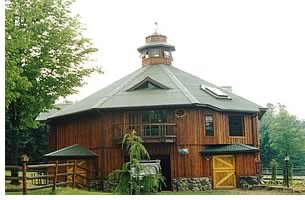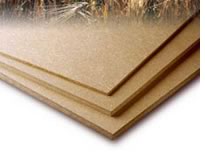

09/2005
“Together we can make a difference,” writes Sarah Susanka, FAIA, in her foreword to Green Building Products, “and this book points the way.” In an excerpt from the introduction to this residential green-product specification guide, editors Alex Wilson and Mark Piepkorn explain the difference among salvaged, post-consumer-recycled, post-industrial-recycled, and agricultural-waste materials.
 The materials
used to produce a building product, and where those materials come from,
are important green criteria and probably the best known. When many people
think of green building products, they think of products made from recycled
materials.
The materials
used to produce a building product, and where those materials come from,
are important green criteria and probably the best known. When many people
think of green building products, they think of products made from recycled
materials.
Salvaged products
Whenever we can reuse a product instead of producing a new one from raw
materials—even if those raw materials are from recycled sources—we
save resources and energy. Many salvaged materials used in buildings
(including bricks, millwork, framing lumber, plumbing fixtures, and
period hardware) are mostly sold on a local or regional basis by salvage
yards; some are marketed nationally. Certain salvaged products are
not recommended, including toilets, faucets, and windows—because
the water- and energy-savings of today’s high-performance products
offer far greater benefit than any there might be in using the old
ones. With salvaged wood products, be aware that lead paint may be
present. Test painted wood for lead paint (easy-to-use test kits are
available) and, if found, avoid the product or have the wood stripped
and sealed.
 Products with post-consumer recycled content
Products with post-consumer recycled content
Recycled content is an important feature of many green products. From
an environmental standpoint, post-consumer is preferable to post-industrial
recycled content because post-consumer recycled materials are more
likely to be diverted from landfills. For most product categories,
there is currently no set standard for the percentage of recycled content
required to qualify for inclusion in GreenSpec; such standards will
increasingly be developed in the future as more products begin using
higher percentages of recycled materials.
In some cases, products with recycled content are included with caveats regarding where they should be used. Rubber flooring made from recycled automobile tires is a good example—the caveat is that these products should not be used in most fully enclosed indoor spaces due to potential off-gassing of harmful chemicals.
 Products with post-industrial recycled content
Products with post-industrial recycled content
Post-industrial recycling refers to the use of industrial byproducts—as
distinguished from material that has been in consumer use. Examples of
post-industrial recycled materials used in building products include
iron-ore slag from blast furnace metal refining used in making mineral
wool insulation; fly ash from the smoke stacks of coal-burning power
plants used in making concrete; and PVC scrap from pipe manufacturing
used in making roofing shingles. Usually excluded from this category
is the use of scrap within the manufacturing plant where it was generated—material
that would typically have gone back into the manufacturing process anyway.
While post-consumer recycled content is a lot better than post-industrial
recycled content, the latter can still qualify a product for inclusion
in GreenSpec in many product categories—especially those where
there are no products available with post-consumer recycled content.
Products made from agricultural waste
material
A number of products are included in GreenSpec because they are derived
from agricultural waste products. Most of these are made from straw—the
stems left after harvesting cereal grains—though other materials
such as rice hulls and sunflower seed hulls are also used in some building
products.
Excerpted from Green Building Products, copyright 2005 BuildingGreen Inc. Reprinted with permission.
Copyright 2005 The American Institute of Architects.
All rights reserved. Home Page ![]()
![]()
